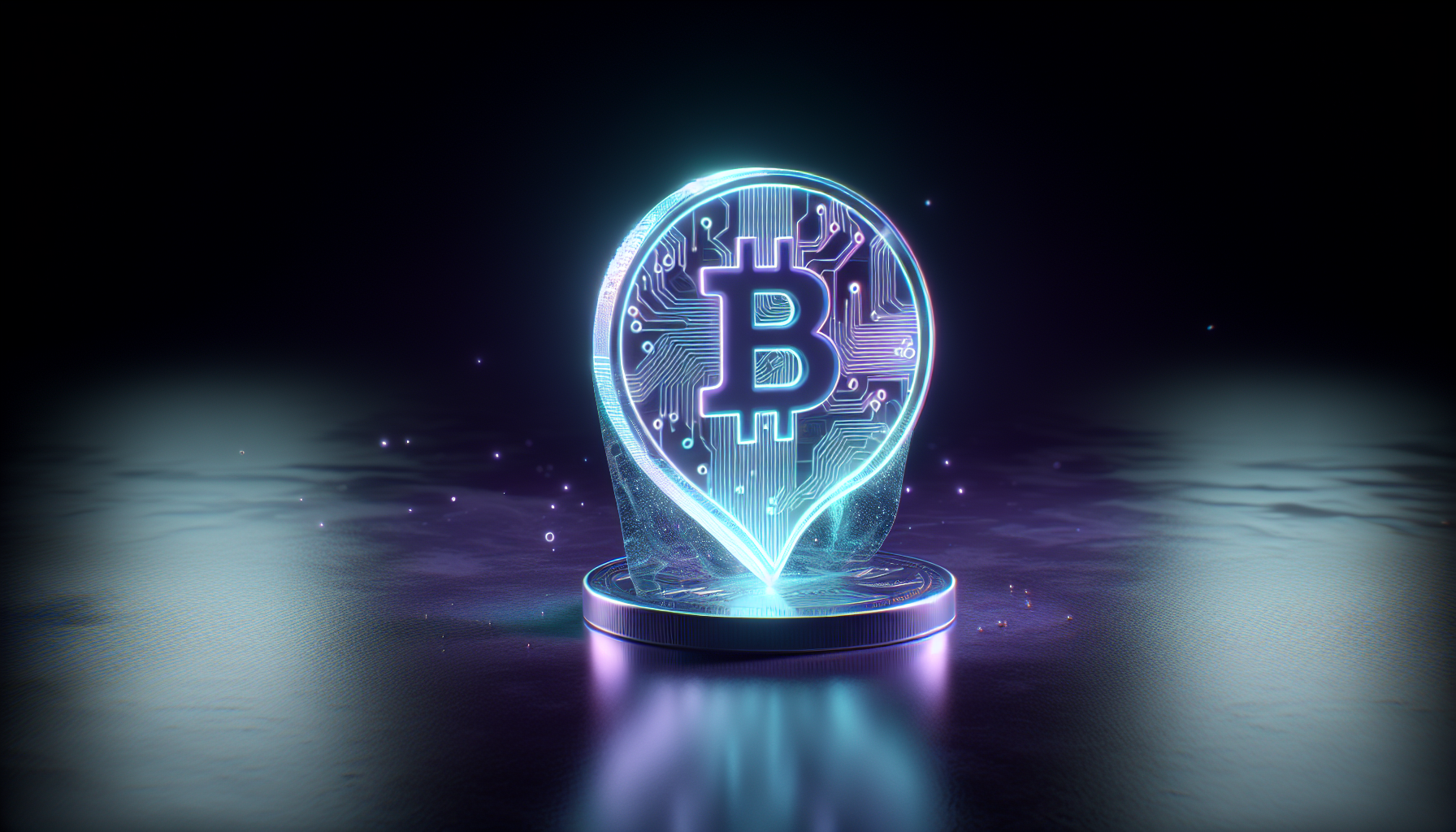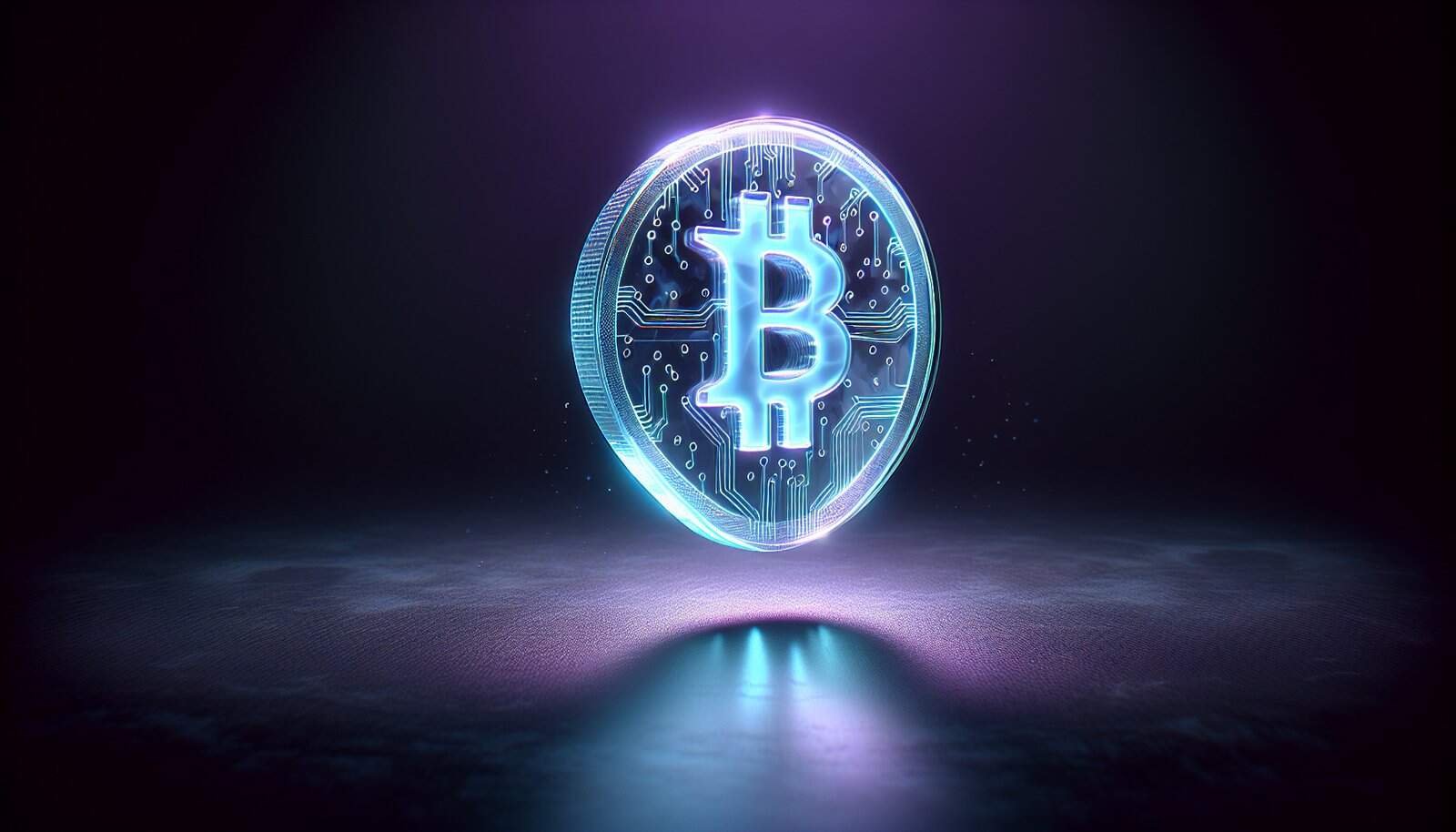Have you ever wondered how you could buy, sell, or move NFTs across different blockchains without being limited to a single ecosystem?

GhostMarket – Known As One Of The First True Cross-chain NFT Marketplaces
GhostMarket gained attention early on for enabling NFT activity across multiple blockchains, positioning itself as one of the pioneering “cross-chain” NFT marketplaces. In this article you’ll learn how GhostMarket approaches cross-chain NFTs, what features you can expect, how to use it safely, and what potential benefits and limitations come with cross-chain trading.
What does “cross-chain” mean for NFTs?
Cross-chain means you can interact with NFTs that originate on different blockchains and, depending on the marketplace’s design, transfer, trade, or display them across those chains. This allows you to access a broader inventory of digital collectibles and gives creators more flexibility to reach buyers on different networks.
When you use a cross-chain marketplace, you’re often interacting with wrapped tokens, bridges, or native integrations that make an NFT available beyond its original network. That can reduce fragmentation and let you leverage the strengths of different blockchains—like low fees on one chain and high liquidity on another.
Why GhostMarket mattered early on
GhostMarket was recognized early for combining multi-chain support with a marketplace interface—helping buyers and creators connect across ecosystems. If you were an early NFT collector or creator, you likely noticed how fragmented marketplaces were. GhostMarket attempted to remove some of the friction by supporting multiple blockchains and offering features tailored for creators and collectors.
The marketplace emphasized practical cross-chain interactions rather than just being a front-end, which is why it’s often described as a “true” cross-chain marketplace. That said, cross-chain systems can be complex, and you should check the latest integrations and security measures before acting.
How cross-chain NFTs typically work
There are a few technical approaches that a marketplace can use to enable cross-chain NFTs. Knowing the basics helps you understand trade-offs and risks when you use GhostMarket or similar services.
Native multi-chain support
Some NFTs are minted natively on multiple blockchains (rare), or the marketplace supports deployments across networks where each NFT exists on its origin chain. This approach keeps provenance intact but requires the marketplace to coordinate listings from different chains.
Wrapped NFTs and custodial bridges
A wrapped NFT is a representation of the original NFT on another chain. The original asset is often locked in a contract or custodial wallet while the wrapped version can be bought, sold, or moved on the destination chain. This method is common but introduces counterparty or smart-contract risk, depending on custody.
Trustless bridges and cross-chain messaging
More advanced bridges rely on decentralized validators or verifiable cross-chain messaging to maintain trustlessness. These systems aim to reduce custodial risk but are typically more complex and can have throughput or latency trade-offs.
Cross-chain indexing and discovery
A marketplace that lists NFTs from several chains needs robust indexing and discovery services so you can search, filter, and compare items regardless of where they were minted. This is essential for a good user experience.

Key GhostMarket features you’ll likely use
GhostMarket focused on a set of features valuable for both collectors and creators. Here are the common categories you can expect to interact with.
Multi-chain listings and browsing
You can browse NFTs from different chains in one place, which makes discovery easier. Listings often show original chain provenance, metadata, and any cross-chain wrapping information.
Buy, bid, and auction support
You’ll find options to buy NFTs at fixed prices, place bids, or participate in auctions. The marketplace typically handles payment routing according to the chain where the NFT is available or where the wrapped representation is being traded.
Minting and collections
If you’re a creator, you can mint NFTs directly on supported chains or import existing collections. GhostMarket historically supported collection management, royalties setup, and batch minting features for creators.
Royalties and creator rights
Royalties can be enforced at the smart-contract level on many chains. A cross-chain marketplace needs to map or implement royalty mechanisms across different standards to ensure creators are paid when their NFTs sell or resell.
Wallet integration and key management
You’ll connect using a wallet that supports the chain of interest. Cross-chain marketplaces often integrate multiple wallets and may provide guidance on moving assets across chains. Wallet choice affects how easily you can interact with certain networks.
Marketplace analytics and stats
You’ll have access to sales history, floor prices, creator data, and other analytics that help inform buying, selling, and pricing decisions.
Supported blockchains (what to check before you act)
Blockchain integrations change over time. GhostMarket’s early multi-chain focus meant it worked with several networks, but you should verify live support before transacting.
Here’s a sample table format you can use to compare current chain support (replace with up-to-date info from the marketplace):
| Blockchain | Typical Use Cases | Trade-offs to Consider |
|---|---|---|
| Ethereum | High liquidity, many collectors | High fees during congestion |
| Binance Smart Chain | Low fees, fast confirmations | Centralization concerns for some users |
| WAX / Immutable X / Layer-2s | Low-cost minting/transactions | Different standards for royalties/metadata |
| Phantasma / NEO / Other niche chains | Specific communities and tools | Smaller buyer pools and tooling |
Always check GhostMarket’s official documentation or status pages to confirm which chains are live and how bridge mechanisms are handled.

How to get started using GhostMarket
Here is a step-by-step practical guide to help you start using the marketplace. The exact steps will depend on chain support and UI changes, but this will set expectations.
1. Prepare your wallet(s)
Set up wallets that support the chains you plan to use. You may need multiple wallets if you’ll interact with NFTs on different networks. Securely store your recovery phrases and private keys—if you lose them, you likely lose access to your NFTs.
- For Ethereum and EVM-based chains, popular wallets include MetaMask, Trust Wallet, and others.
- For non-EVM chains, use the wallets officially recommended for that chain.
2. Fund wallets with required tokens
You’ll need native tokens for transaction fees (gas) on each chain. If you’re trading on Ethereum, you need ETH. On BSC you need BNB, and so forth. Check marketplace listings to see which tokens are accepted for payment.
3. Connect your wallet to GhostMarket
Use the site’s wallet connect feature and follow on-screen prompts. Approve signature requests only when you understand what the signature does. Avoid connecting with public devices or unsafe networks.
4. Browse and evaluate NFTs
Look at metadata, transaction history, creator information, and any additional provenance details. Confirm whether the NFT is native, wrapped, or on a bridge.
5. Buy, bid, or mint
When you buy, make sure you understand which chain the sale will occur on and whether you will receive the original NFT or a wrapped representation. If minting, review royalty settings and metadata before confirming.
6. Move or bridge assets (if required)
If you want an NFT on another chain, use the marketplace’s official bridge or recommended tool. Be aware of time delays, fees, and the mechanism in use (custodial vs trustless). Confirm the transaction on both chains and keep records.
7. Complete post-sale tasks
If you sold an NFT, confirm receipt of funds and any royalty payments. If you bought one, confirm ownership on the destination chain and update any display platforms or wallets.
Fees and economics: what you’ll pay
Fee structures vary across marketplaces and chains. Here are typical fees and who pays them.
Listing and minting fees
You may pay minting costs (gas) and a listing fee depending on the chain and marketplace policy. Batch minting can sometimes reduce per-item cost.
Marketplace commission
Most marketplaces charge a commission on sales. This percentage may vary by collection or creator partnership.
Royalties
Royalties are usually defined by the NFT smart contract and, if implemented correctly, automatically paid on resales. Cross-chain enforcement of royalties is more complex; the marketplace will explain how it preserves creator royalties across networks.
Bridging and swap fees
If the marketplace uses bridges to move NFTs across chains, you’ll commonly pay bridging fees and pay gas on both origin and destination chains.

Security considerations you must know
Security is crucial when trading NFTs across chains. Cross-chain systems can introduce extra complexity and risk.
Smart-contract risk
Wrapped NFTs and bridges depend on smart contracts. Bugs or exploits in contracts can lead to loss of assets. You should prefer well-audited bridges and contracts.
Custodial vs trustless models
If a marketplace or bridge uses custodial wallets to lock originals, those entities become trusted custodians. This model reduces complexity but increases counterparty risk. Trustless bridges aim to minimize this risk but can be more fragile or complex.
Phishing and fake listings
Scammers often create fake collections and phishing sites. Verify domain names, check social proof, and confirm creator links. Don’t sign transactions that you don’t fully understand.
Replay and cross-chain fraud risks
Cross-chain operations can have timing mismatches and edge cases. Always confirm the final state on the appropriate chain and keep transaction records.
Royalties, provenance, and creator protections
Creator rights are a key issue in the NFT world. You’ll want to ensure that royalties are respected and provenance remains intact.
- On many blockchains, royalties are enforced by the smart contract standard (e.g., ERC-721/1155 or chain-specific standards). Cross-chain marketplaces must map or implement royalty enforcement across chains.
- Provenance is typically preserved via immutable transaction history on the origin chain. When NFTs are wrapped, marketplaces often maintain metadata that links back to the original token and transaction hashes.
- If you’re a creator, confirm that royalty splits, artist fees, and secondary sales payments are set up correctly before minting.

Comparing GhostMarket to other marketplaces
It helps to compare features before you decide where to buy or sell. Below is a general comparison table format to guide your decision—replace items with current, verified data when making a final choice.
| Feature | GhostMarket (Cross-chain Focus) | Single-chain Marketplaces (e.g., OpenSea) |
|---|---|---|
| Multi-chain Listings | Yes — emphasis on cross-chain | Usually limited to one or a small number of chains |
| Bridging | Bridges/wrapping employed | Generally not offered |
| Custody Model | Varies by bridge and contract | Usually non-custodial for native chain |
| Fees | Commission + bridging costs | Commission varies; lower bridging needs |
| Discovery | Aggregates multi-chain assets | Focused on single-chain depth |
| Complexity | Higher due to cross-chain mechanics | Lower, easier for beginners |
This kind of comparison helps you weigh whether you want broader access (and complexity) or a simpler, single-chain experience.
Practical examples of cross-chain use cases
Seeing practical scenarios helps you understand real benefits.
1. A collector moving a rare NFT to a cheaper chain
If you own an NFT on a high-fee chain but want to trade it when gas is low on a cheaper chain, a cross-chain marketplace can help you wrap and list it where buyers are more active.
2. A creator reaching multiple communities
A creator can mint or list across multiple networks, reaching collectors who prefer different chains without creating separate collection pages on each marketplace.
3. Composability and DeFi interactions
Moving NFTs between chains can enable new composability—collateralizing an NFT on one chain and using liquidity on another, for example—though such use cases are advanced and risky.
Pros and cons you should weigh
Understanding strengths and limitations will help you make informed choices.
Pros
- Access to a larger market of buyers and sellers.
- Flexibility for creators to reach wider audiences.
- Potential to reduce costs by trading on cheaper chains.
- Innovative use cases across multiple ecosystems.
Cons
- Added technical complexity and bridging risks.
- Potential for royalty enforcement gaps across chains.
- Need to manage multiple wallets and tokens.
- Longer transaction flows and more fees in some scenarios.
Best practices when using cross-chain marketplaces
Follow these rules of thumb to lower risk and improve outcomes.
- Use official links and verified collections.
- Keep your private keys and seed phrases secure.
- Test with small amounts before doing large transfers or sales.
- Read audit reports for bridges and smart contracts when available.
- Keep backups of transaction hashes and receipts.
- Stay informed about network-specific issues, like chain forks or congestion.
Regulatory and tax considerations you’ll face
Cross-chain activity doesn’t change tax or regulatory obligations. You should:
- Document all transactions, including bridging events and token swaps.
- Treat sales as taxable events according to your local laws.
- Be aware of AML/KYC policies on platforms that facilitate fiat or centralized custody.
If necessary, consult a tax professional who understands digital assets in your jurisdiction.
How cross-chain technology may evolve and what it means for you
Cross-chain tech is rapidly advancing. Future improvements may include faster and more secure bridges, standardized cross-chain NFT representations, and better royalty enforcement.
For you, that means potentially simpler workflows and less friction when moving assets. However, the space will also attract more complex financial products and potential regulatory scrutiny, so stay cautious and informed.
Troubleshooting common issues you might face
If something goes wrong, here are steps you can take.
Problem: Transaction stuck or failed during bridging
- Check the transaction status on both chains’ explorers.
- Confirm whether the bridge has a known backlog or downtime.
- Contact marketplace support with transaction hashes.
- Avoid repeating transactions until you understand the failure cause.
Problem: NFT appears as wrapped but metadata missing
- Verify if the marketplace provides metadata relays or fallback servers.
- Check the original chain’s metadata for completeness.
- Contact the creator or marketplace support for data fixes.
Problem: Royalties not paid on secondary sale
- Review the sale contract to see whether royalties were enforced on-chain.
- Contact the marketplace, because cross-chain payouts may require manual reconciliation in some systems.
Questions you should ask before trusting a cross-chain marketplace
- Which chains are integrated, and what is the live status of each?
- How does the marketplace implement cross-chain transfers (custodial vs trustless)?
- Are bridges audited and by whom?
- How are royalties and provenance preserved across chains?
- What are the fees on origin and destination chains?
- Where can you find official documentation and support?
Quick reference: Checklist before listing or buying
| Step | What you check |
|---|---|
| Wallet | Right wallet, backed up seed phrase |
| Funding | Sufficient native token for gas on required chains |
| Provenance | Verify token origin and transaction history |
| Royalties | Confirm royalty settings and enforcement |
| Bridge | Confirm bridge method and fees |
| Support | Know how to reach marketplace support with transaction hashes |
Using this checklist will reduce surprises and help you act confidently.
Final thoughts and actionable advice
If you’re interested in cross-chain NFTs, GhostMarket represents a practical early approach to removing marketplace silos. You’ll gain access to broader collections and can pursue unique cross-chain use cases. However, the added complexity of bridges, potential custody considerations, and varied enforcement of royalties mean you should approach with preparation and care.
Start small, verify integrations, and keep an eye on audits and community feedback. That way you can benefit from broader market access while managing the risks that come with moving assets between chains.
Frequently asked questions (FAQs)
Will my NFT’s provenance be preserved when it’s moved across chains?
Yes, provenance is usually preserved if the marketplace maintains links to the original token and transaction. Wrapped representations typically include metadata that references origin chain transaction hashes. Always confirm via the NFT metadata and transaction history.
Are royalties guaranteed when trading across chains?
Royalties are enforced by smart contracts on their native chains. Cross-chain enforcement depends on the marketplace and bridge design. Verify the marketplace’s royalty policy before listing or trading.
What’s riskier: wrapping or trustless bridging?
Wrapping (custodial) often introduces counterparty risk because assets may be held in a contract or by custodians. Trustless bridges aim to reduce that risk but can be more complex and still vulnerable to protocol bugs. Evaluate audits and reputations.
Do you need multiple wallets?
Usually yes, if you’re active on multiple chains. Some multi-chain wallets exist, but you’ll still need to manage assets and gas tokens for each chain you use.
How do you know a bridge is safe?
Check for third-party audits, community reviews, security incident history, and transparent operating models. Prefer bridges with clear governance and security disclosures.
If you want, I can provide a tailored step-by-step walkthrough for a specific chain pairing (for example, moving an NFT from Chain A to Chain B) or a checklist listing exact wallet types and tools to use for the current GhostMarket integrations. Which chains are you planning to work with?
